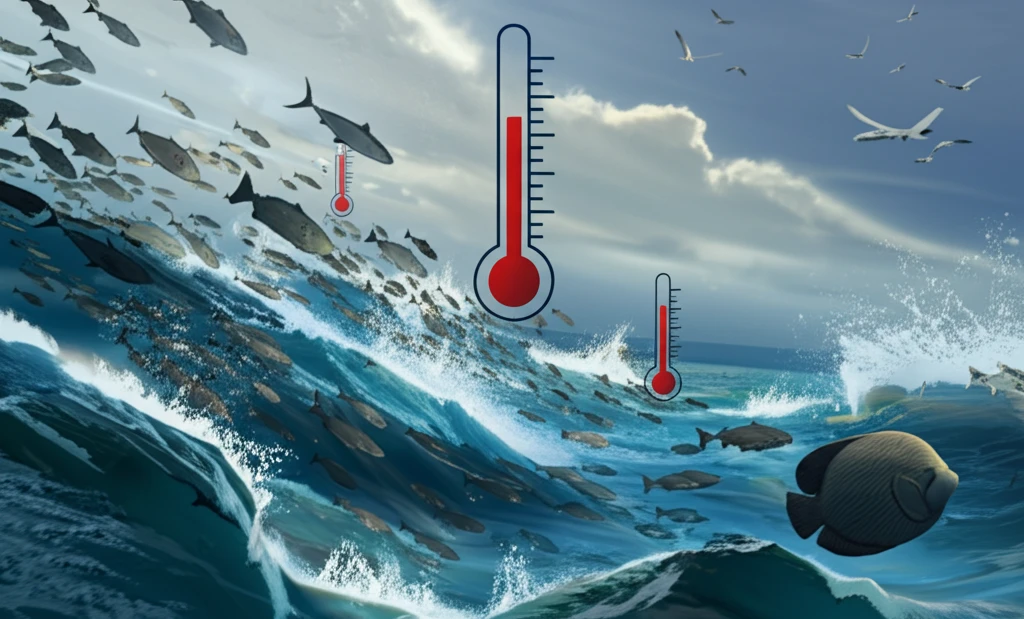
Seafood on the Seesaw: How Fish Populations Adapt to Shifting Ocean Conditions
"New research reveals the surprising ways New England fish are riding the waves of climate change – and what it means for your next seafood dinner."
The North Atlantic, a region teeming with marine life, is undergoing significant environmental upheaval. Warming waters, changing currents, and altered ecosystems are no longer abstract threats; they are tangible realities impacting the productivity and distribution of fish populations, a cornerstone of New England's economy and cultural identity.
For years, fisheries management has relied on established models, assuming a degree of stability in fish populations. However, these traditional approaches often fail to account for the dynamic nature of marine ecosystems. Recent research highlights the need for a more adaptive approach, one that acknowledges the shifting productivity of fish stocks and incorporates environmental factors into management strategies.
A groundbreaking study delves into the complexities of these changes, examining the productivity of 25 fish stocks in the Northeast US continental shelf. By analyzing decades of data and employing advanced statistical methods, the researchers uncovered surprising patterns and revealed the potential for more effective, climate-aware fisheries management.
Unstable Waters: Climate Change and Fish Productivity

The study’s core finding is that the productivity of many New England fish stocks isn’t static; it fluctuates over time, often in response to environmental cues. Researchers used state-space models, sophisticated statistical tools, to analyze long-term data on fish populations, recruitment rates, and environmental conditions. These models allowed them to estimate the “dynamic productivity” of each stock – in other words, how their capacity to reproduce and thrive changes from year to year.
- Temperature Swings: Rising water temperatures significantly impact fish metabolism and energy allocation, leading to changes in productivity.
- Current Events: Shifts in ocean currents, like the Labrador Current and the Gulf Stream, disrupt ecosystems and affect fish distribution and survival.
- Climate Connections: Atmospheric patterns, like the North Atlantic Oscillation, influence water temperature and wind patterns, further impacting fish populations.
Toward Adaptive Fisheries Management
This research underscores the urgent need for fisheries management to evolve. By incorporating dynamic productivity estimates into existing models and considering the influence of environmental factors, managers can make more informed decisions about harvest levels and conservation strategies. This adaptive approach will be crucial for ensuring the long-term sustainability of New England's fisheries in the face of a changing climate. Now more than ever, local fisheries will play a key role in our community's ability to thrive in the face of climate change.
